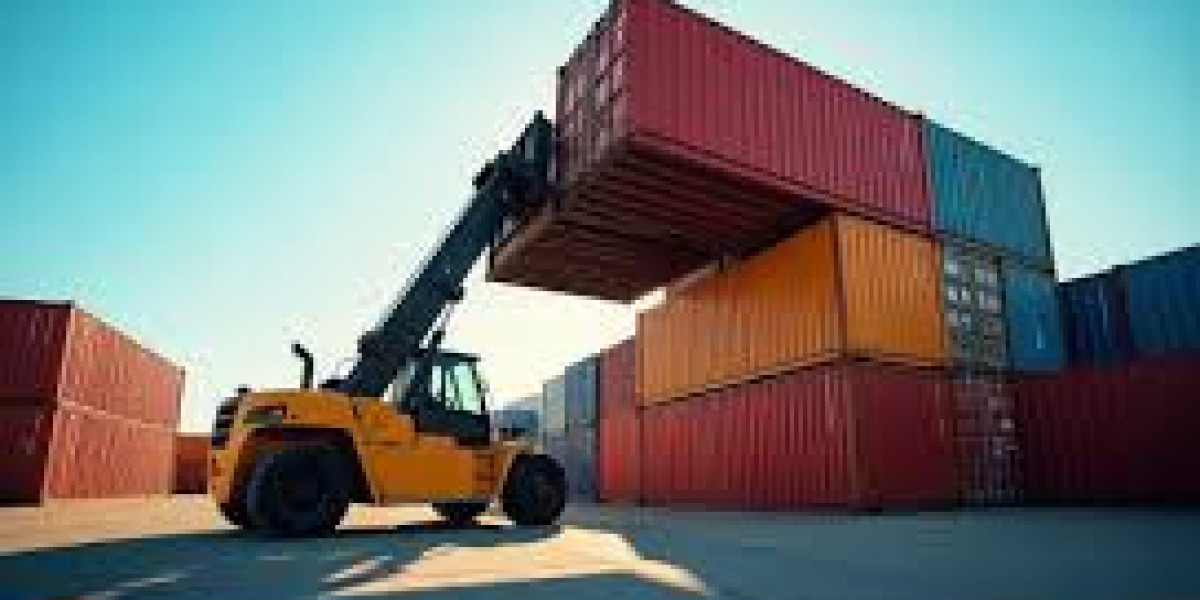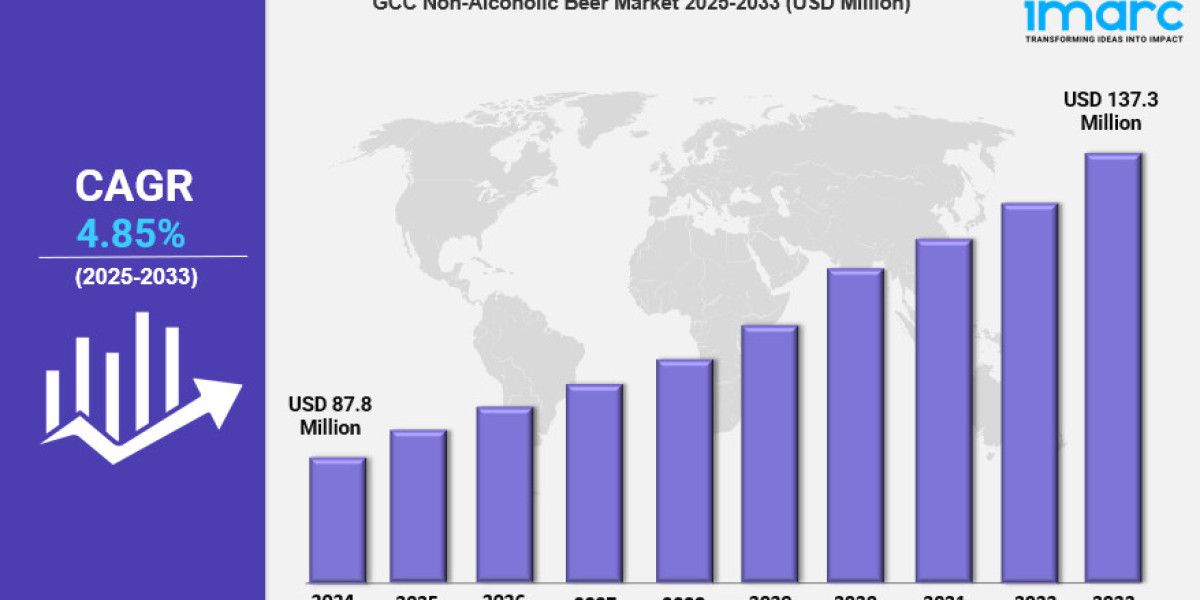According to IMARC Group's latest research publication, "India Cargo Handling Equipment Market Size, Share, Trends and Forecast by Equipment Type, Propulsion Type, Application, Region, and Company, 2025-2033", the India cargo handling equipment market size reached USD 1.03 Billion in 2024. Looking forward, the market is expected to reach USD 1.55 Billion by 2033.
This detailed analysis primarily encompasses industry size, business trends, market share, key growth factors, and regional forecasts. The report offers a comprehensive overview and integrates research findings, market assessments, and data from different sources. It also includes pivotal market dynamics like drivers and challenges, while also highlighting growth opportunities, financial insights, technological improvements, emerging trends, and innovations. Besides this, the report provides regional market evaluation, along with a competitive landscape analysis.
Grab a sample PDF of this report:
https://www.imarcgroup.com/india-cargo-handling-equipment-market/requestsample
Our report includes:
- • Market Dynamics
- • Market Trends and Market Outlook
- • Competitive Analysis
- • Industry Segmentation
- • Strategic Recommendations
Growth Factors in the India Cargo Handling Equipment Market
- Massive Port Infrastructure Expansion Creating Equipment Demand
India's cargo handling equipment market is experiencing robust momentum thanks to an aggressive push in port modernization and capacity enhancement. The government's ambitious plan to double container handling capacity at major ports to 40 Million TEUs within five years is reshaping the entire logistics landscape. This isn't just about adding more berths—it's about completely transforming how cargo moves through Indian ports. States like Gujarat, Maharashtra, Kerala, Andhra Pradesh, and Odisha are seeing new shipbuilding and repair centers come up, each requiring specialized handling equipment. The Greenfield Shipyard Building Scheme is attracting substantial investment, both domestic and international, which translates directly into equipment procurement. What makes this particularly interesting is the scale—we're talking about infrastructure projects that will generate 2 Million jobs while simultaneously demanding everything from industrial trucks and tow tractors to sophisticated port cranes and conveying systems. Major ports are upgrading their equipment fleets to handle larger vessels and increased cargo volumes efficiently. The focus isn't just on quantity either; there's serious emphasis on reducing turnaround times and improving operational efficiency, which means ports need modern, reliable equipment that can operate continuously with minimal downtime. Container terminals are investing heavily in reach stackers and gantry cranes, while bulk cargo facilities require specialized conveying equipment. The ripple effect extends beyond ports too—inland container depots, freight stations, and multimodal logistics parks all need cargo handling equipment to support the growing trade ecosystem.
- Automation and Digital Integration Transforming Operations
The Indian logistics sector is witnessing a fundamental shift toward automated and digitally-enabled cargo handling solutions. Take Adani Krishnapatnam Port's implementation of an advanced cargo handling system in August—this represents a broader industry trend where traditional manual operations are giving way to smart, integrated systems. Ports are deploying automated guided vehicles, robotic stackers, and AI-powered cranes that communicate with each other to optimize cargo movement. This technology push is being driven by practical needs: faster cargo transit, reduced labor dependency, minimized human error, and better resource utilization. Modern ports are essentially becoming tech hubs where equipment isn't just moving containers—it's collecting data, predicting maintenance needs, and optimizing routes in real-time. Electric propulsion systems are gaining traction too, driven partly by stricter emission regulations and partly by operational economics. Electric forklifts, reach stackers, and terminal tractors offer lower operating costs and align with India's sustainability goals. The digital integration aspect is equally important—equipment now comes with IoT sensors and connectivity features that feed into warehouse management systems and port operating platforms. This connectivity enables better planning, reduces congestion, and improves overall terminal productivity. Companies investing in new equipment are looking for technology-forward solutions that can integrate seamlessly with their digital infrastructure. The trend toward automated storage and retrieval systems in warehouses is also creating demand for specialized conveying and stacking equipment that can work in densely packed environments.
- Booming E-commerce and Manufacturing Driving Inland Logistics Demand
While ports grab headlines, there's explosive growth happening in inland cargo handling driven by e-commerce expansion and manufacturing growth. India's e-commerce sector has created an entirely new demand category for material handling equipment—fulfillment centers, distribution hubs, and last-mile delivery stations all need sophisticated equipment to process growing order volumes. These facilities operate differently from traditional warehouses; they require high-throughput systems with conveyors, automated sorters, and electric pallet trucks that can handle rapid order picking and packing. The manufacturing sector's growth, particularly in automotive, electronics, and consumer goods, is creating steady demand for industrial trucks, tow tractors, and specialized handling equipment. Factory floors need equipment that can move raw materials, work-in-progress inventory, and finished goods efficiently. The government's focus on manufacturing through various initiatives is translating into new factories and expanded production facilities, each requiring comprehensive material handling solutions. Road and rail cargo handling is becoming increasingly important as multimodal logistics gains prominence. Container freight stations, rail terminals, and trucking hubs need equipment that can transfer cargo between different transport modes quickly and safely. The growth of organized logistics and warehousing sector means more professionally-run facilities that invest in quality equipment rather than makeshift solutions. Cold chain infrastructure for food and pharmaceuticals is another growth area requiring specialized refrigerated handling equipment. Airport cargo terminals are expanding capacity to handle growing air freight volumes, particularly for high-value and time-sensitive shipments, creating demand for aircraft ground support equipment and cargo loaders.
Key Trends in the India Cargo Handling Equipment Market
- Industrial Trucks and Port Cranes Leading Equipment Categories
The equipment landscape shows clear preferences based on application needs. Industrial trucks—including forklifts, reach trucks, and pallet trucks—dominate sales volumes because they're versatile workhorses used across warehouses, manufacturing facilities, and distribution centers. These trucks are getting smarter with lithium-ion batteries replacing traditional lead-acid systems, offering faster charging and longer operational hours. Port cranes represent the high-value segment, with ship-to-shore gantry cranes, rubber-tired gantry cranes, and mobile harbor cranes being critical for container terminal operations. Modern port cranes come with sophisticated automation features, anti-collision systems, and remote operation capabilities. Tow tractors are seeing increased adoption in airports and large logistics facilities where they move multiple trailers efficiently. Conveying equipment, particularly automated conveyor systems, is gaining ground in e-commerce fulfillment centers and manufacturing plants where continuous material flow matters. Stackers, both manual and powered, remain essential for warehouse operations, with reach stackers being particularly important for container handling at ports and rail terminals. The trend is clearly toward electric and hybrid propulsion systems across all equipment categories, driven by both environmental regulations and total cost of ownership considerations. Battery technology improvements are making electric equipment viable for heavy-duty applications that traditionally required diesel power.
- Marine Applications Dominating with Growing Multi-Modal Integration
Marine cargo handling currently commands the largest share of equipment deployment, reflecting India's position as a major maritime trading nation. Ports handle the bulk of international trade, making them the biggest consumers of specialized cargo handling equipment. Container terminals need vast fleets of equipment operating around the clock—quay cranes for vessel operations, yard cranes for stacking, and horizontal transport equipment for moving containers within terminals. Bulk cargo terminals handling coal, iron ore, and grains require different equipment types—shiploaders, unloaders, and conveyor systems designed for continuous high-volume operations. The interesting development is how road and rail cargo handling is gaining prominence as supply chains become more sophisticated. Inland container depots and container freight stations are essentially creating mini-ports away from coastlines, requiring similar equipment but adapted for land-based operations. Rail-based container movement is growing, particularly for long-distance domestic cargo, creating demand for rail-mounted gantry cranes and intermodal transfer equipment. Air cargo, while smaller in volume, represents a premium segment with specialized requirements—aircraft loaders, baggage handling systems, and temperature-controlled units for pharmaceutical and perishable cargo. The real growth opportunity lies in equipment that can handle multiple modes efficiently—transferring containers from ships to rail, or from trucks to aircraft, requires flexible, robust equipment that works across different environments.
- Regional Development Patterns Reflecting Economic Geography
Regional market dynamics reveal how India's economic geography shapes equipment demand. West India, particularly Gujarat and Maharashtra, leads consumption driven by major ports like JNPT, Mundra, and Pipavav, along with strong industrial presence. Mumbai's position as India's commercial capital creates enormous logistics activity, while Gujarat's manufacturing clusters and ports generate sustained equipment demand. North India shows growing momentum with Delhi-NCR's logistics hubs, the dedicated freight corridor's development, and expanding industrial zones in Haryana and Uttar Pradesh. South India presents a diverse picture—Chennai, Visakhapatnam, and Kochi ports drive marine equipment demand, while Bengaluru and Hyderabad's IT industry has created sophisticated warehousing needs. The region's manufacturing base in automotive and electronics adds steady demand. East India, traditionally slower, is seeing increased activity with Paradip and Haldia ports modernizing and new industrial corridors developing in Odisha and West Bengal. Each region has distinct requirements—coastal states need port equipment, while landlocked states focus on warehouse and manufacturing equipment. The government's push for balanced regional development through infrastructure projects is creating opportunities across geographies, not just in traditional commercial centers.
Our comprehensive india cargo handling equipment market outlook reflects both short-term tactical and long-term strategic planning. This analysis is essential for stakeholders aiming to navigate the complexities of the india cargo handling equipment market and capitalize on emerging opportunities.
India Cargo Handling Equipment Market Report Segmentation:
Breakup by Equipment Type:
- • Industrial Trucks
- • Tow Tractors
- • Conveying Equipment
- • Stacker
- • Port Cranes
- • Others
Breakup by Propulsion Type:
- • IC Engine
- • Electric
Breakup by Application:
- • Air
- • Road and Rail
- • Marine
Regional Insights:
- • North India
- • South India
- • East India
- • West India
Research Methodology:
The report employs a comprehensive research methodology, combining primary and secondary data sources to validate findings. It includes market assessments, surveys, expert opinions, and data triangulation techniques to ensure accuracy and reliability.
Note: If you require specific details, data, or insights that are not currently included in the scope of this report, we are happy to accommodate your request. As part of our customization service, we will gather and provide the additional information you need, tailored to your specific requirements. Please let us know your exact needs, and we will ensure the report is updated accordingly to meet your expectations.
About Us:
IMARC Group is a global management consulting firm that helps the world's most ambitious changemakers to create a lasting impact. The company provides a comprehensive suite of market entry and expansion services. IMARC offerings include thorough market assessment, feasibility studies, company incorporation assistance, factory setup support, regulatory approvals and licensing navigation, branding, marketing and sales strategies, competitive landscape and benchmarking analyses, pricing and cost research, and procurement research.
Contact Us:
IMARC Group
134 N 4th St. Brooklyn, NY 11249, USA
Email: sales@imarcgroup.com
Tel No: (D) +91-120-433-0800
United States: +1-201-971-6302



